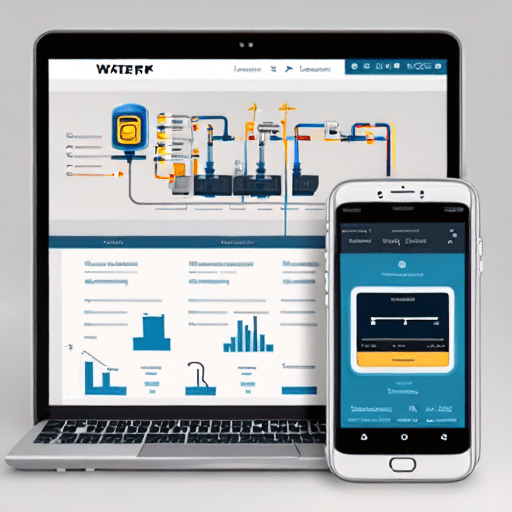How IoT-Driven Platforms are Transforming Logistics Operations

Transforming Logistic Operations With IOT-Driven Platform
As we move further into 2025, the logistics industry is undergoing a profound transformation, largely fueled by the rise of Internet of Things (IoT) technology. IoT-driven platforms are revolutionizing how logistics companies manage their operations, enabling real-time monitoring, predictive maintenance, and seamless coordination across extensive supply chains.
For companies in the logistics sector, adopting IoT-driven solutions has become essential to remain competitive in an industry where speed, accuracy, and efficiency are key.
At the same time, platforms like Dalos are attracting investors with their scalable, subscription-based models, generating recurring revenue and offering long-term growth potential.
The Growing Importance of IoT in Logistics
The logistics industry is among the most complex sectors in the global economy. Companies must coordinate the movement of goods across multiple locations, dealing with transportation, warehousing, and distribution.
These intricate systems can lead to inefficiencies, delays, and high operational costs, challenging the profitability of logistics providers.
IoT technology offers a powerful solution to these challenges. By integrating IoT sensors, GPS tracking, and data analytics into logistics operations, companies gain real-time visibility into their assets, optimize resource allocation, and predict maintenance needs before costly disruptions occur.
Leading IoT-driven platforms like Dalos are driving this change, providing logistics firms with the tools to streamline operations and attract investors looking to tap into the rapidly growing IoT market.
How IoT is Streamlining Logistics Operations
IoT technology opens new possibilities for logistics companies to enhance their efficiency and reduce costs. Here’s how IoT-driven platforms like Dalos are transforming logistics in 2024:
1. Real-Time Asset Monitoring for Improved Visibility
One of the biggest challenges in logistics is maintaining real-time visibility into the location and status of assets like trucks, trailers, containers, and warehouse equipment. Dalos leverages IoT-powered GPS tracking and sensors to give logistics companies a live view of all their assets, no matter where they are in the supply chain.
How This Transforms Logistics:
- Reduced Delays: Real-time asset tracking allows logistics managers to anticipate delays and reroute shipments to ensure on-time deliveries.
- Improved Coordination: Enhanced visibility leads to better coordination between warehouses, transportation providers, and distribution centers, minimizing bottlenecks.
- Enhanced Security: Dalos’ real-time tracking capabilities help reduce theft and unauthorized asset usage, providing greater control over equipment and cargo.
2. Predictive Maintenance to Minimize Downtime
Unplanned equipment downtime is a major source of inefficiency in logistics. Dalos uses IoT sensors to enable predictive maintenance, monitoring the health of vehicles and equipment in real time. By analyzing data such as engine performance, fuel consumption, and operational hours, Dalos predicts when maintenance is needed before a breakdown occurs.
How This Reduces Downtime:
- Proactive Maintenance: Schedule maintenance based on actual performance, minimizing unexpected breakdowns.
- Cost Savings: Prevent costly repairs by addressing minor issues early.
- Extended Equipment Lifespan: Proactive maintenance extends the life of critical assets, keeping vehicles and equipment operational longer.
3. Optimizing Resource Allocation with IoT Data
Efficient resource allocation is crucial for logistics companies managing multiple assets across a vast supply chain. Dalos provides detailed insights into asset usage, helping managers optimize resource deployment. IoT sensors track the usage patterns of vehicles, containers, and warehouse equipment, allowing companies to make data-driven decisions.
How This Improves Efficiency:
- Reduce Idle Time: Identify underutilized equipment and allocate resources where they are most needed.
- Increase Productivity: Consistently use assets in the most efficient manner.
- Lower Operating Costs: Better resource utilization reduces costs, improving profitability.
4. Seamless Integration with Supply Chain Systems
Dalos’ IoT-driven platform integrates seamlessly with existing supply chain management systems, combining real-time asset data with business-critical information such as inventory levels, transportation schedules, and warehouse management. This creates a unified view of the entire supply chain, leading to more efficient decision-making and enhanced operational performance.
How This Enhances Supply Chain Management:
- Better Decision-Making: Unified data enables faster, more informed decisions about optimizing operations.
- Increased Collaboration: Dalos fosters collaboration across the supply chain, improving communication and reducing errors.
- Scalable Operations: As companies grow, Dalos scales with them, easily integrating additional assets.
The Appeal to Investors: How Dalos Generates Recurring Revenue
In addition to transforming logistics operations, Dalos is an attractive investment opportunity due to its recurring revenue model. IoT platforms like Dalos generate steady, long-term revenue by offering subscription-based services that scale with a company’s needs.
1. Recurring Revenue Model
The subscription-based model is a significant draw for investors. As logistics companies grow, requiring more assets to be monitored, their subscription fees increase, providing a steady stream of income for Dalos.
Why This Appeals to Investors:
- Steady Income Stream: A subscription model ensures predictable, consistent revenue.
- Scalability: As customers scale operations, Dalos’ revenue grows proportionally, providing long-term growth potential.
- Customer Retention: Logistics companies are unlikely to switch platforms after integrating Dalos, ensuring long-term customer retention.
2. IoT Market Growth
The global IoT market continues to expand, driven by demand for real-time asset monitoring, predictive maintenance, and data-driven decision-making. IoT platforms like Dalos are well-positioned to capitalize on this growth.
Why This Is a Growth Opportunity:
- Expanding Market: The IoT market is projected to reach $1.6 trillion by 2025, providing growth opportunities for Dalos in the logistics sector.
- High Demand for Real-Time Solutions: As supply chains grow in complexity, demand for real-time solutions is rising.
- Innovation-Driven Growth: IoT technology is constantly evolving, and Dalos is poised to incorporate new advancements, driving further growth.
Recommended Articles
- Rami El-Chafei
- •
- October 31, 2025
Bluetooth & RFID: Revolutionizing Asset Management in Hospitality
In the hospitality industry, efficiently managing high-value assets like kitchen equipment, audiovisual technology, and luxury furniture is crucial. Therefore, this is essential for maintaining operational excellence. Consequently, asset management in...
- Rami El-Chafei
- •
- October 2, 2025
Water Leak Sensors: Prevent Costly Damage with Real-Time Detection
Water damage can be one of the most destructive and expensive issues for businesses in various industries, ranging from hospitality and logistics to manufacturing and real estate. A seemingly minor...
- Rami El-Chafei
- •
- September 30, 2025
IoT and the Future of Asset Tracking in Logistics
In today’s rapidly evolving logistics industry, where speed, accuracy, and customer satisfaction are non-negotiable, companies must adapt to new technologies to stay competitive. Asset tracking in logistics, including managing vehicles,...




